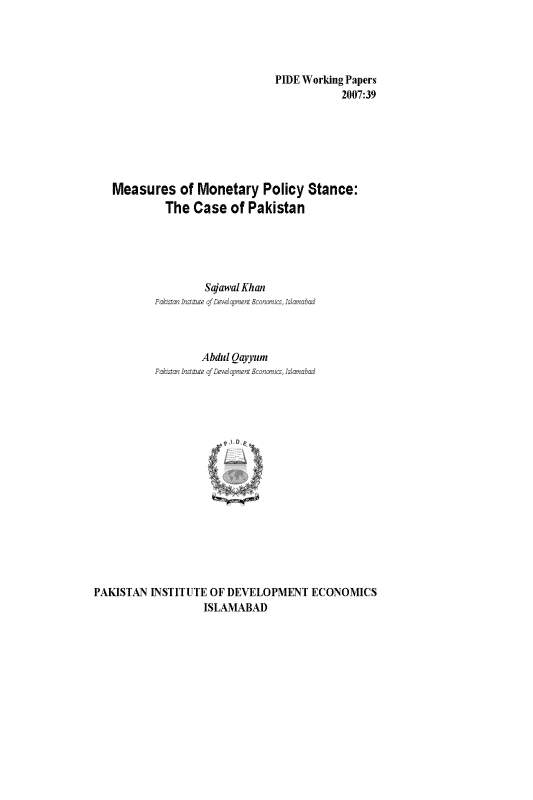Measures of Monetary Policy Stance: The Case of Pakistan
In this paper we construct two measures of the monetary policy stance. The stance of monetary policy, regarded as a quantitative measure of whether the policy is too tight, neutral, or too loose relative to objectives of stable prices and output growth, is useful and important for at least two reasons. First, it helps the authority (central bank) to determine the course of monetary policy needed to keep the objective (goals) within the target range. Secondly, a quantitative measure of the stance is important for an empirical study of the transmission of monetary policy actions through the economy. Measuring the stance of the monetary policy free from any criticism, however, is not an easy task. As pointed out by Gecchetti (1994), “there seems to be no way to measure monetary actions that does not raise serious objections”.




